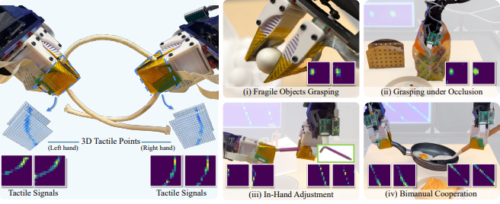2024-11-27 カリフォルニア工科大学(Caltech)
<関連情報>
- https://www.caltech.edu/about/news/new-technique-to-look-deep-within-tectonic-plates
- https://www.science.org/doi/10.1126/sciadv.adr3327
- https://www.nature.com/articles/s41586-023-06227-w
分散型音響センシングで発見された南カリフォルニアの微細なモホ構造 Fine-scale Southern California Moho structure uncovered with distributed acoustic sensing
James Atterholt and Zhongwen Zhan
Science Advances Published:27 Nov 2024
DOI:https://doi.org/10.1126/sciadv.adr3327

Abstract
Moho topography yields insights into the evolution of the lithosphere and the strength of the lower crust. The Moho reflected phase (PmP) samples this key boundary and may be used in concert with the first arriving P phase to infer crustal thickness. The densely sampled station coverage of distributed acoustic sensing arrays allows for the observation of PmP at fine-scale intervals over many kilometers with individual events. We use PmP recorded by a 100-km-long fiber that traverses a path between Ridgecrest, CA and Barstow, CA to explore Moho variability in Southern California. With hundreds of well-recorded events, we verify that PmP is observable and develop a technique to identify and pick P-PmP differential times with high confidence. We use these observations to constrain Moho depth throughout Southern California, and we find that short-wavelength variability in crustal thickness is abundant, with sharp changes across the Garlock Fault and Coso Volcanic Field.
分散型音響センシングによって画像化された地震のアスペリティの断裂 The break of earthquake asperities imaged by distributed acoustic sensing
Jiaxuan Li,Taeho Kim,Nadia Lapusta,Ettore Biondi & Zhongwen Zhan
Nature Published:02 August 2023
DOI:https://doi.org/10.1038/s41586-023-06227-w

Abstract
Rupture imaging of megathrust earthquakes with global seismic arrays revealed frequency-dependent rupture signatures1,2,3,4, but the role of high-frequency radiators remains unclear3,4,5. Similar observations of the more abundant crustal earthquakes could provide critical constraints but are rare without ultradense local arrays6,7. Here we use distributed acoustic sensing technology8,9 to image the high-frequency earthquake rupture radiators. By converting a 100-kilometre dark-fibre cable into a 10,000-channel seismic array, we image four high-frequency subevents for the 2021 Antelope Valley, California, moment-magnitude 6.0 earthquake. After comparing our results with long-period moment-release10,11 and dynamic rupture simulations, we suggest that the imaged subevents are due to the breaking of fault asperities—stronger spots or pins on the fault—that substantially modulate the overall rupture behaviour. An otherwise fading rupture propagation could be promoted by the breaking of fault asperities in a cascading sequence. This study highlights how we can use the extensive pre-existing fibre networks12 as high-frequency seismic antennas to systematically investigate the rupture process of regional moderate-sized earthquakes. Coupled with dynamic rupture modelling, it could improve our understanding of earthquake rupture dynamics.



